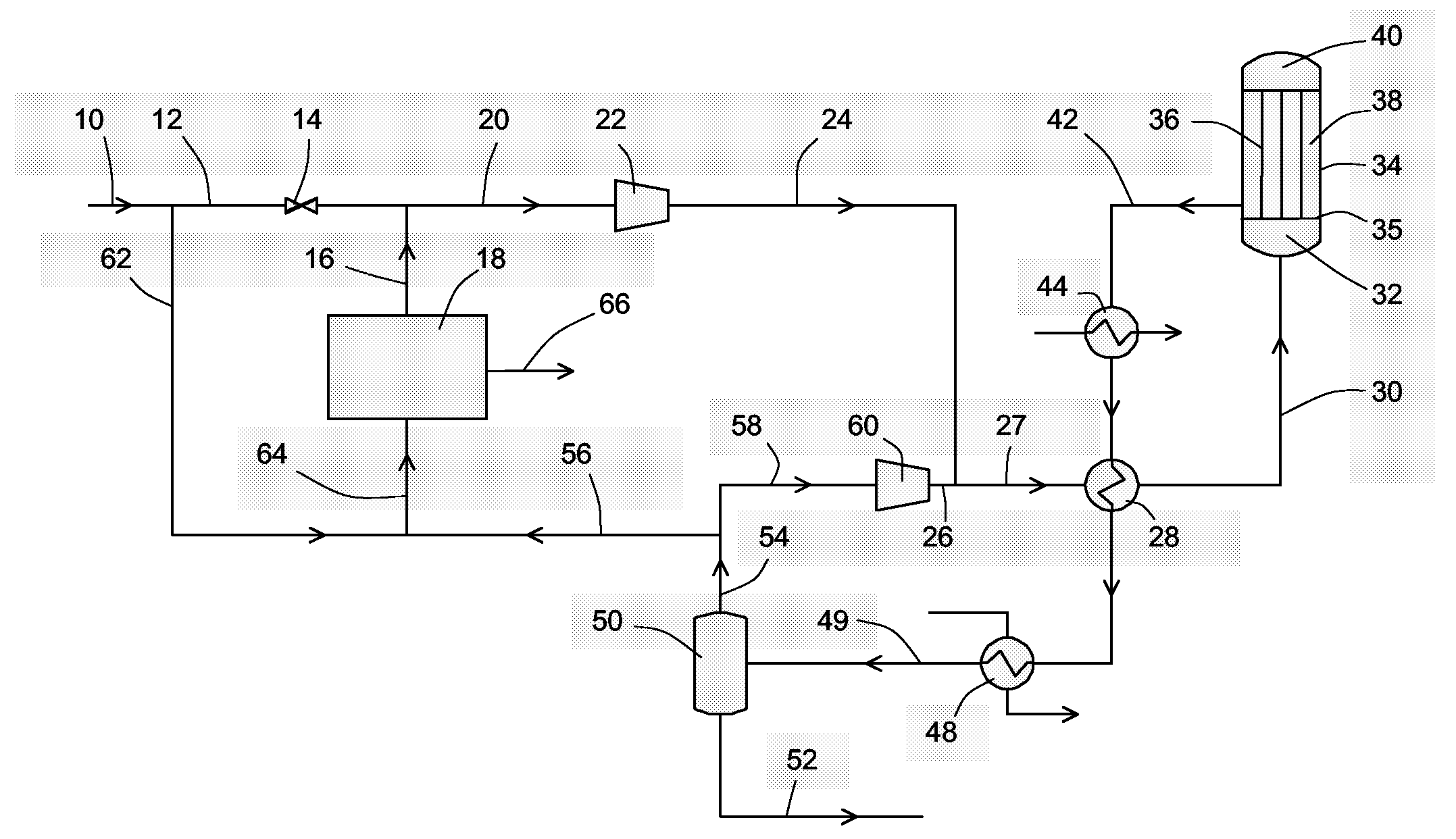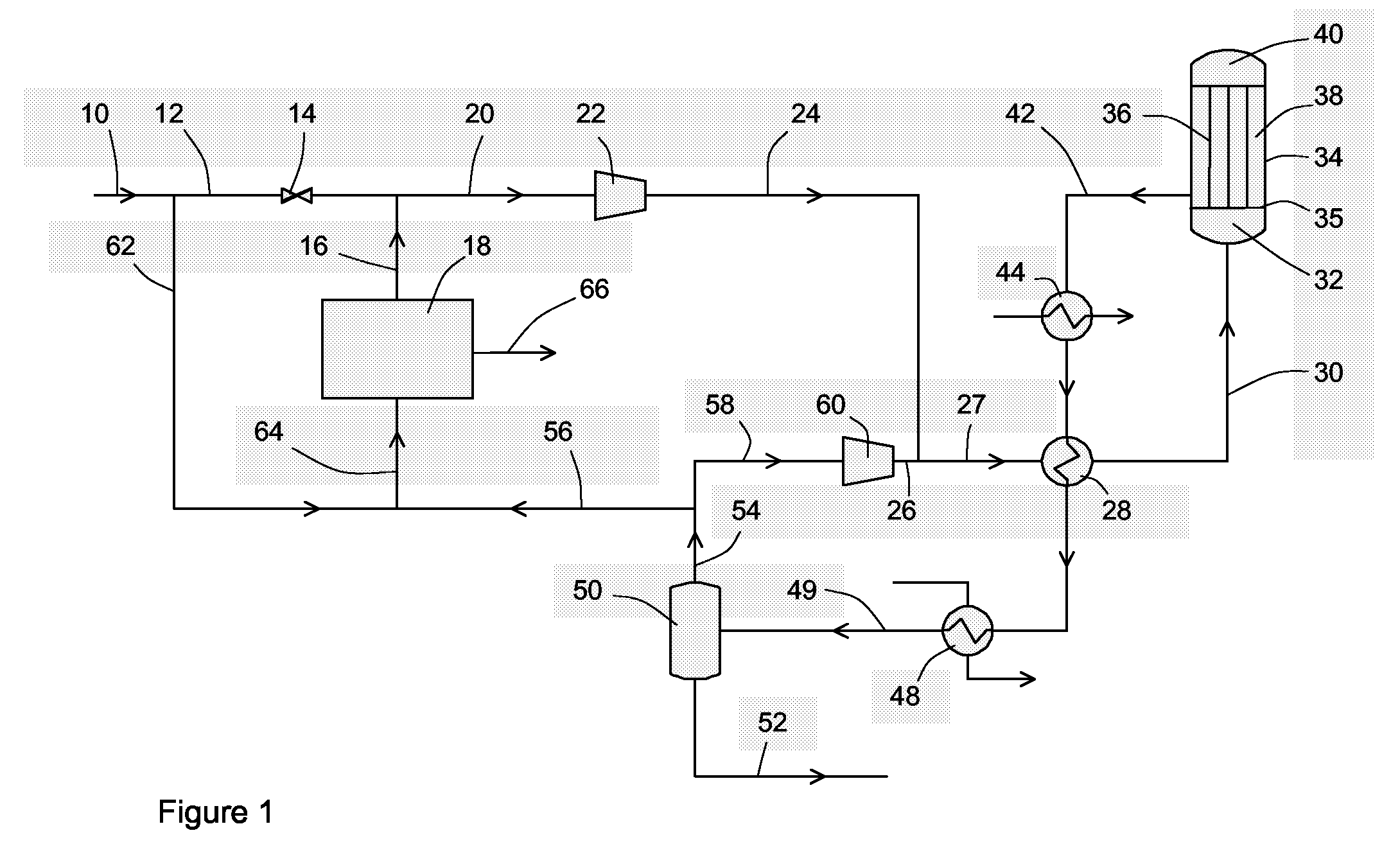Methanol synthesis
- Summary
- Abstract
- Description
- Claims
- Application Information
AI Technical Summary
Problems solved by technology
Method used
Image
Examples
example 1
[0043]According to the embodiment depicted in FIG. 1.
[0044]
Stream106216203042585652Temperature [C.]45.045.045.044.9220.0255.045.045.045.0Pressure [bar]34.034.034.034.081.580.077.777.777.7Molar Flow [kgmole / h]15210.61181.01336.815366.475366.466877.160000.01583.15294.2Mass Flow [kg / h]18607314447269517432184449284448767017117683156637Hydrogen63.63%63.63%100.00%66.79%59.86%53.50%58.08%58.08%0.24%CO24.71%24.71%0.00%22.56%7.61%3.49%3.79%3.79%0.09%CO27.21%7.21%0.00%6.58%5.88%5.37%5.70%5.70%1.49%Methane3.15%3.15%0.00%2.88%19.46%21.93%23.70%23.70%1.27%Nitrogen0.79%0.79%0.00%0.72%5.44%6.13%6.64%6.64%0.11%Argon0.17%0.17%0.00%0.15%1.11%1.25%1.35%1.35%0.04%Methanol0.00%0.00%0.00%0.00%0.53%6.95%0.67%0.67%79.97%H2O0.34%0.34%0.00%0.31%0.11%1.38%0.06%0.06%16.78%Methanol production is high using a low volume of synthesis catalyst.
PUM
| Property | Measurement | Unit |
|---|---|---|
| Fraction | aaaaa | aaaaa |
| Fraction | aaaaa | aaaaa |
| Percent by volume | aaaaa | aaaaa |
Abstract
Description
Claims
Application Information
 Login to View More
Login to View More - R&D
- Intellectual Property
- Life Sciences
- Materials
- Tech Scout
- Unparalleled Data Quality
- Higher Quality Content
- 60% Fewer Hallucinations
Browse by: Latest US Patents, China's latest patents, Technical Efficacy Thesaurus, Application Domain, Technology Topic, Popular Technical Reports.
© 2025 PatSnap. All rights reserved.Legal|Privacy policy|Modern Slavery Act Transparency Statement|Sitemap|About US| Contact US: help@patsnap.com



